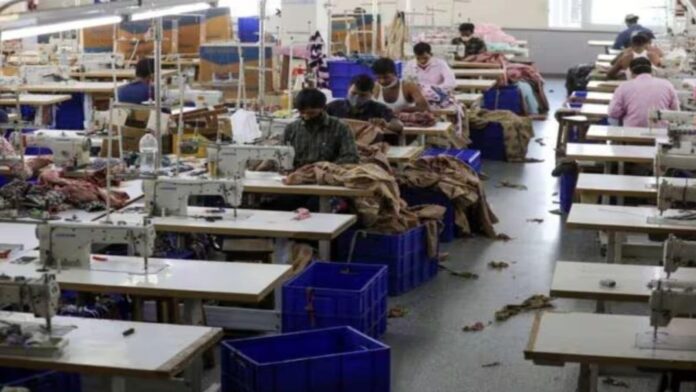US tariff impact on India: Amid a sudden escalation of trade tensions between India and the US, with American President Donald Trump threatening to impose tariffs “substantially” higher than the 25 per cent announced earlier, Indian exporters face a two-pronged challenge in maintaining access to their largest export market — the US.
On the one hand, China has begun aggressively undercutting prices to outcompete other countries; on the other hand, the undefined “penalty” over and above the 25 per cent reciprocal tariffs has complicated negotiations between US importers and Indian exporters, especially in low-margin products such as apparel and footwear.
The uncertainty over the “penalty” on India for purchasing Russian oil has come at a time when Indian exporters typically receive bulk summer orders, including for cotton garments, lightweight footwear, and linen clothing. Normally, exporters and importers share the burden of additional tariffs, but exporters said contracts have stalled due to the unknown penalty amount.
“A lot of exporters, particularly from the apparel and footwear sectors, are facing uncertainty because summer season orders are set to be placed very shortly. They are in touch with buyers, and some of them have even visited the US. But neither the buyer nor the seller is in a position to state what they are willing to negotiate, as the ‘penalty’ amount is unknown,” Ajay Sahai, director general & CEO of the Federation of Indian Export Organisations (FIEO), told The Indian Express.
US retailers and apparel companies typically begin shipping merchandise from global suppliers at least two to three months before the summer season starts in April. Traders, typically, begin negotiating contracts much earlier.

“China has become a little more aggressive because they are outpriced by 5 per cent, and they are looking at the extent to which they can reduce the price. That’s also a challenge. It may not be entirely possible for the exporter to absorb the duty, and therefore they are requesting that the government should chip in for a limited period only, as we hope that a bilateral trade agreement (BTA) will be concluded by September or October,” Sahai added.
However, after Trump threatened to raise tariffs on Indian goods over its purchase of Russian oil, New Delhi on Monday said the targeting of India was “unjustified and unreasonable”, and that the country would take “all necessary measures” to safeguard its “national interests and economic security”.
Story continues below this ad
“India is not only buying massive amounts of Russian oil, they are then, for much of the oil purchased, selling it on the open market for big profits… They don’t care how many people in Ukraine are being killed by the Russian war machine. Because of this, I will be substantially raising the tariff paid by India to the USA,” Trump said in a post on his social media platform, Truth Social.
Rating agency ICRA said that the higher-than-expected US tariffs on India — and the potential penalty linked to India’s crude and defence purchases from Russia — are likely to pose a headwind to India’s GDP growth in the current fiscal. “We have lowered our growth forecast for India for FY2026 by 20 basis points to 6.0 per cent; the extent of the said penalties could result in a further downside,” the agency said.
‘Tariff threats against India are not economics’
Simon J Evenett, Professor of Geopolitics and Strategy at the International Institute for Management Development (IMD), an independent academic institute in Switzerland, said in a LinkedIn post that tariff threats against India have “nothing to do with economics”. He said that the United States has now antagonised all five of the original BRICS nations, home to more than 3.2 billion people.
“I struggle to see a coherent grand strategy here — other than to take on every possible pole of alternative power. None of the BRICS have the defence dependence on the USA that the EU, Korea, Japan, and the UK have — and that probably played the greater part in the latter’s acquiescence to recent US tariff threats. So what is the US offering to the BRICS?” Evenett said.
Story continues below this ad
“Access to the US market isn’t a compelling answer. Take India. Its largest export to the USA is smartphones — does anyone else on the planet buy smartphones? Next biggest export is a variant of diamonds — there are other buyers for these too. Medicines are third on the list — same argument. Light oil next — you get the picture. Only one-sixth of Indian goods exports go to the USA. Big deal,” he added.
Global uncertainty over ‘transshipment’
As Trump has threatened several countries with additional tariffs over the re-routing of goods to the US, Deborah Elms, a trade and economic policy expert with the Hinrich Foundation, said in a LinkedIn post that one key complaint from the business community is the lack of clarity on what the US currently means by “transshipment”.
“Given that tariffs are about to be 40 per cent on anything deemed to be transshipped, definitions are critically important. Typically, firms are required to ‘substantially transform’ products. In other words, you aren’t allowed to simply take a box, slap a new label on it saying ‘from country X’, but must take raw materials, parts, and components to create something transformed. The amount of transformation is critically important. In a free trade agreement, officials spend months or years wrangling over these rules. Is there a value threshold that needs to be crossed? Is it a change in tariff heading? Subheading? Unfortunately, with new tariffs coming on August 7, we have no guidance at all on these rules,” Elms said.



